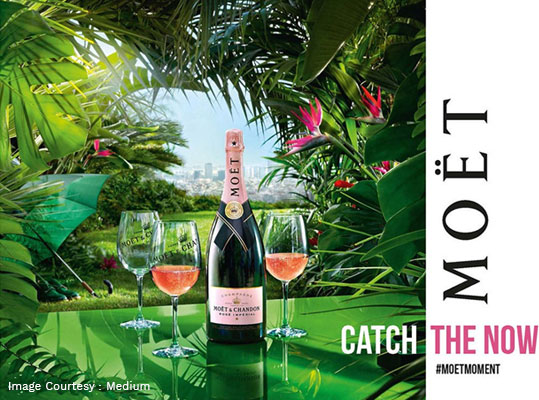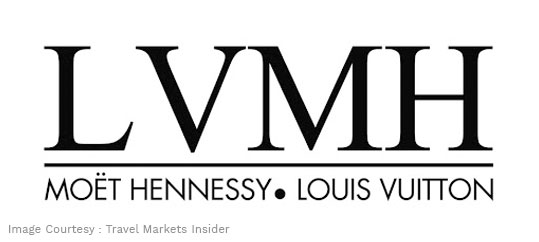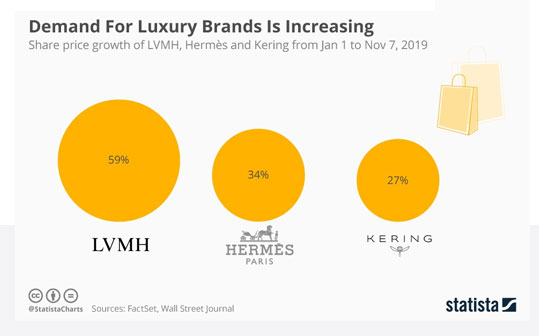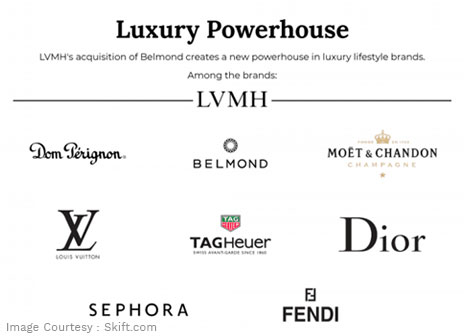- Blog
- Brand Story
- France
The Incredible Brand Story of LVMH
- 5th Jul 2020
- 5422
- 0

A Brief Look at the Emergence of Louis Vuitton
The early 1800’s observed carriages, trains and boats as the major mode of transportation in France because of which luggage was quite roughly handled. During this time, 16 year old Louis Vuitton arrived in Paris and started working as an apprentice for Monsieur Marichel. This marked the beginning of his artisanal career and he quickly became a highly valued designer. During this time he designed custom made boxes and luggage for clients and continued creating designs for the next 17 years.

After great success with designing luggage, he opened his first workshop in Paris in 1859. By 1914 there were over 200 employees working under him. The legendary LV monogram was invented in 1896 in honor of Louise Vuitton and his son George went on to become head of the company. With Louis Vuitton being one of the most premiere luxury brands in the world, there was a strong sense to further build an empire out of the business. Financial director Joseph Lafont initiated the merge of the brand with leading manufacturers of Champagne and Cognac, Moet et Chandon and Hennessy, respectively, thereby creating the LMVH conglomerate in 1987.
The Moet et Chandon Journey
The brand was founded in 1743 and proved to be highly profitable almost immediately after its sales began. By the year 1880, Moet et Chandon had an annual sale of 2.5 million bottles. Over the course of their journey, the brand acquired two of their chief competitors by 1970 and soon after came together to purchase Christian Dior. Dior was their very first business purchase outside of the wine and champagne industry.

By 1971, the company decided to merge with Hennessy with the intent to make their presence larger and gain further international growth. Finally in 1987, Louis Vuitton struck a deal with them to create a mutual conglomerate, where both of the company’s subsidiaries and management remained the same throughout.
The LVMH Story
Ever since Louis Vuitton and Moet et Chandon came together to form a union company, they have set out and acquired a series of multiple brands which has led them to becoming the world’s largest conglomerate, both in size and sales. LVMH competitors like Richemont and Kering have gone on to make a revenue of $13.5 to $14 billion dollars compared to LVMH that, as of 2018, has managed to gather a total revenue of over $46 billion dollars. In less than a span of 40 years, LMVH has managed to acquire 75 companies under its wing.
In the early 90’s when the companies had just come together, LMVH focused mainly on bringing diversity to the business in terms of policies, strategy management and business decisions. Between 1996 and 1998 the company spent a whopping $3 billion dollars solely on acquiring multiple regional and multinational companies. Although their biggest acquisition of the time came in 1998, when LMVH had acquired Sephora for $267 million dollars. By this time, the list of LMVH subsidiaries were rapidly increasing, with the company trying to initiate more business across borders.

In terms of acquisitions, the year 1999 was extremely important for LMVH as a company. The company was looking at breaking into the beauty industry and found its best bet in four brands that were topping the beauty charts globally. That year, LMVH invested in these four beauty brands, namely- Makeup Forever, Benefit Cosmetics, Bliss Spa and Hard candy. This acquisition was a very significant part of their brand strategy and completely revolutionized the beauty industry.
After beginning their journey into the beauty world, LMVH were looking at forming other sectors in order to expand their reach. To satiate this, they went on to form a watch and jewelry sector as well, within which they decided to invest in brands like Tag Heuer, Ebel and Chaumet. Eventually, after a year they also invested in Phillips Auctioneer and Thomas Pink.
During this time, there were a number of rival companies that were trying to take over LMVH by adopting similar business and marketing strategies. To keep this healthy competition going, LMVH formed partnerships with a number of companies that were considered to be rivals in the past, one of them being Prada that was eventually acquired by Fendi.

The year 1999 therefore was quite a significant year in the LVMH brand timeline. At the end of the year, Louis Vuitton sales were up by 45%, cosmetics and fragrances were up by 24% and champagne sales rose by 21%. The company went on to open their very first US headquarters in New York in December, 1999.
The following year, LMVH set its main focus on conquering the Luxury Fashion market. In order to strengthen its support in the fashion industry, the company acquired 63% stakes in the infamous Italian fashion brand Emilio Pucci. They also bought a minority stake in an Italian fashion company known as Rossimoda and eventually acquired sole ownership. They also acquired stakes in companies like DKNY and Hermes. From 2001 to 2006, LMVH also went on to invest in multinational luxury fashion brands like Fendi and gradually considered increasing its ownership of the brand to 84% in 2003.

In 2006, LVMH turned towards investing in luxury experiences by investing in a chain of luxury hospitality group named Cheval Blanc. They further extended their reach with an acquisition of $3.2 billion towards a travel and hospitality group known as Belmond. In 2011, LVMH once again looked at investing in the jewelry sector and acquired 50.3% stakes in the Italian luxury jewelry company, Bulgari, who sold their stakes in exchange for 3% of LVMH. In the following years LVMH invested in a number of different luxury sectors such as, textile, footwear, makeup, fashion, hospitality, luggage and more.
Significantly, in 2017 LVMH officially acquired the Paris based couture fashion house, Christian Dior in a whopping deal of $13 billion. In 2019, the company also released a co-jointed makeup brand deal, called Fenty, with renowned artist Rihanna, who holds 49% stakes of the brand with 51% owned by LVMH. This move was absolutely ground-breaking for the makeup industry.
Today, the company is home to 75 brands across six different sectors. In 2019, LVMH entered into a joint partnership with Stella McCartney, who ended their long standing partnership with Kering. The brands most recent acquisition was buying Tiffany and Co at a whopping price of $6.4 million. LVMH continues to conquer the luxury brand sector, by being the most powerful conglomerate in the recent times.
 Neha Menon
Neha Menon


Comments
No comments yet.
Add Your Comment
Thank you, for commenting !!
Your comment is under moderation...
Keep reading luxury post